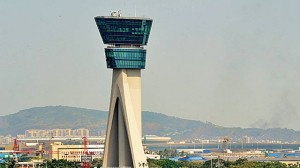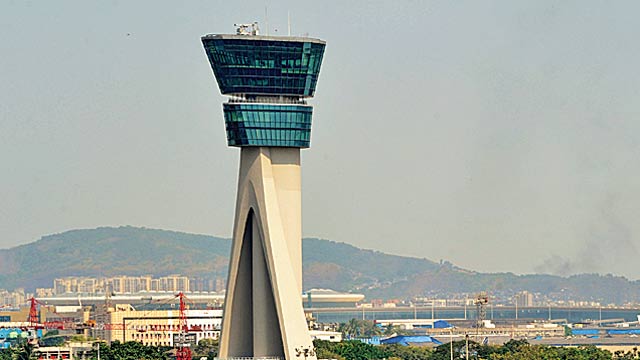AAI has been entrusted with the responsibility of issuance of ‘No Objection Certificate’ for height clearance for structures around the airports to achieve the objective of flight safety.
 “Let’s admit! Our building height restrictions are archaic and need to be streamlined with global norms. Now with Colour Coaded Zoning and NOCAS (NOC Application System) Version 2.0 some method has been put in place, it nevertheless fails to address the larger concerns of urbanization in a city like Mumbai,” admits an official of BMC while requesting anonymity. “The developers still need to run to Airport Clearances if they wish to make taller buildings which is the need of hour in a land starved city like Mumbai.”
“Let’s admit! Our building height restrictions are archaic and need to be streamlined with global norms. Now with Colour Coaded Zoning and NOCAS (NOC Application System) Version 2.0 some method has been put in place, it nevertheless fails to address the larger concerns of urbanization in a city like Mumbai,” admits an official of BMC while requesting anonymity. “The developers still need to run to Airport Clearances if they wish to make taller buildings which is the need of hour in a land starved city like Mumbai.”
The BMC official has been responding to the concerns of the Mumbai-based developers who are asking what difference the new provisions would make if they still have to go to Delhi for making the buildings as taller as some of the other neighbourhood structures. Of course, for the lesser than what height can be achieved the new norms are quite handy.
The proposal to colour code the zones had been mooted in 2013 when a panel constituted by the Civil Aviation Ministry recommended to colour code zones as red, yellow, green and likewise to eliminate the need for an NOC for faster clearances to realty projects. Last year, the Ministry of Civil Aviation (Height Restrictions for Safeguarding of Aircraft Operations) Rules 2015, dated 30th September 2015 in principles addressed the approval concerns of the building height restrictions.
The notification says the Colour Coded Zoning Maps (CCZM) shall be issued by the Airports Authority of India (AAI) based on the latitude & longitude of the area in respect of civil aerodromes which shall indicate through different colour coded grids, the permissible heights in the areas around the airport.
Along with the set of guidelines, the ministry has come up colour coded zoning map which mentions heights in different regions. In Mumbai the ministry has considered 3 airports (Chatrapati Shivaji Airport, Juhu Airport & proposed International Airport at Navi Mumbai) & they have mapped the entire city around those runways in different colours.
These new regulations would also not affect the on-going projects which had got approval before these regulations coming into force. As per the previous rules there was a procedure of conducting an aeronautical survey which would not only analyze the building height in view of the signal from the runway radar, but also look at shielding benefit of other taller buildings in the vicinity or natural structure like hillock/cliff. Section 16 “Savings” in the notification protects the retrospective effects of the new regulation.
If the proposed buildings are within the height mentioned in the colour coded map; the formal approval can be taken from Regional Executive Director, AAI, Western Region, Mumbai Airport, Mumbai. But if height is required beyond the permissible colour coding; then one needs to go to Appellate Committee at New Delhi.
Prima facie it sounds like the easing of NOC regime at a time when the NOCAS 2.0 has also been introduced. However, on a closer look it clearly suggests that the developers still need the same pillar to post running if they have to construct a building that is as high as many other buildings in the neighbourhood.
On December 30, 2015, Civil Aviation Minister Ashok Gajapathi Raju inaugurated the online No Objection Certificate Application System (NOCAS) Version 2.0 which is the online system for the purpose of accepting NOC applications for height clearance for structures such as buildings, masts, chimney, and transmission lines around airports. The status of the application can also be tracked by the applicant under the new system.
AAI has been entrusted with the responsibility of issuance of ‘No Objection Certificate’ for height clearance for structures around the airports to achieve the objective of flight safety. Hitherto, procession of NOC cases involved time consuming manual calculations and verification process resulting in minimum time of six weeks or more for issuing the NOC.
NOCAS Version 2.0 has been developed by AAI’s in-house NOC team in close collaboration with NIIT with user friendly automated features. This version provides access to Urban and Town Planners as well as individual applicants, to verify status of NOC issued. Colour Coded Zoning Maps (CZZM) are available for 12 major cities including the four metros.
Vipul Shah, Managing Director of Parinee Realty maintains that from the overall reading of the regulation and colour coded zoning it appears that the average site elevation in and around Mumbai is 10 meters and about 70-80 per cent of the area shall have height of 50 meters. So, effectively the height will be restricted to about 35-40 meters resulting in applying to appellate committee.
“In my opinion a detailed existing building height survey needs to be done. And then the colour coded zoning map can be relooked at with overlapping on each other. This way a more rational or practical solution can be arrived at; by which ease of doing business can truly be taken a step ahead,” says Shah.
Raj Gala Shah, Partner, Zara Habitats believes the new mechanism will enable the developers to ascertain the minimum permissible height of the project even before purchasing the plot. However, this would have been effective only if its mapping had been done thoroughly and keeping in mind the needs of future redevelopment of dilapidated buildings as well.
“Colour coded zoning is, in a way, good news for most real estate developers who plan to build high rises or skyscrapers. But it should also be easy to interpret leaving no room for ambiguity or red-tapism by any additional authority leading to delay in permissions. The way I see it, the NOCAS Version 2.0 which has been developed by the Airports Authority of India will truly help make the process faster,” says Shah.
The built environment of Mumbai real estate is into evaluating the cost and benefit of Colour Coaded Zoning post the NOCAS Version 2.0. There is no denying that the provisions to a large extent address the concerns related with the NOC of high rise buildings in many cities that plan to build tall buildings. However, in a city like Mumbai it only partially addresses the concerns as the land is scarce and the developers’ natural temptation would be to go higher
In most of the locations of Mumbai where the colour coding allows a certain permissible height of buildings through automatic NOC, already much taller buildings are in existence and hence the rush to Delhi for getting the maximum height clearance will continue.






1 Comment
I must say it was hard to find your blog in google. You write great
content but you should rank your page higher in search engines.
If you don’t know how to do it search on youtube:
how to rank a website Marcel’s way